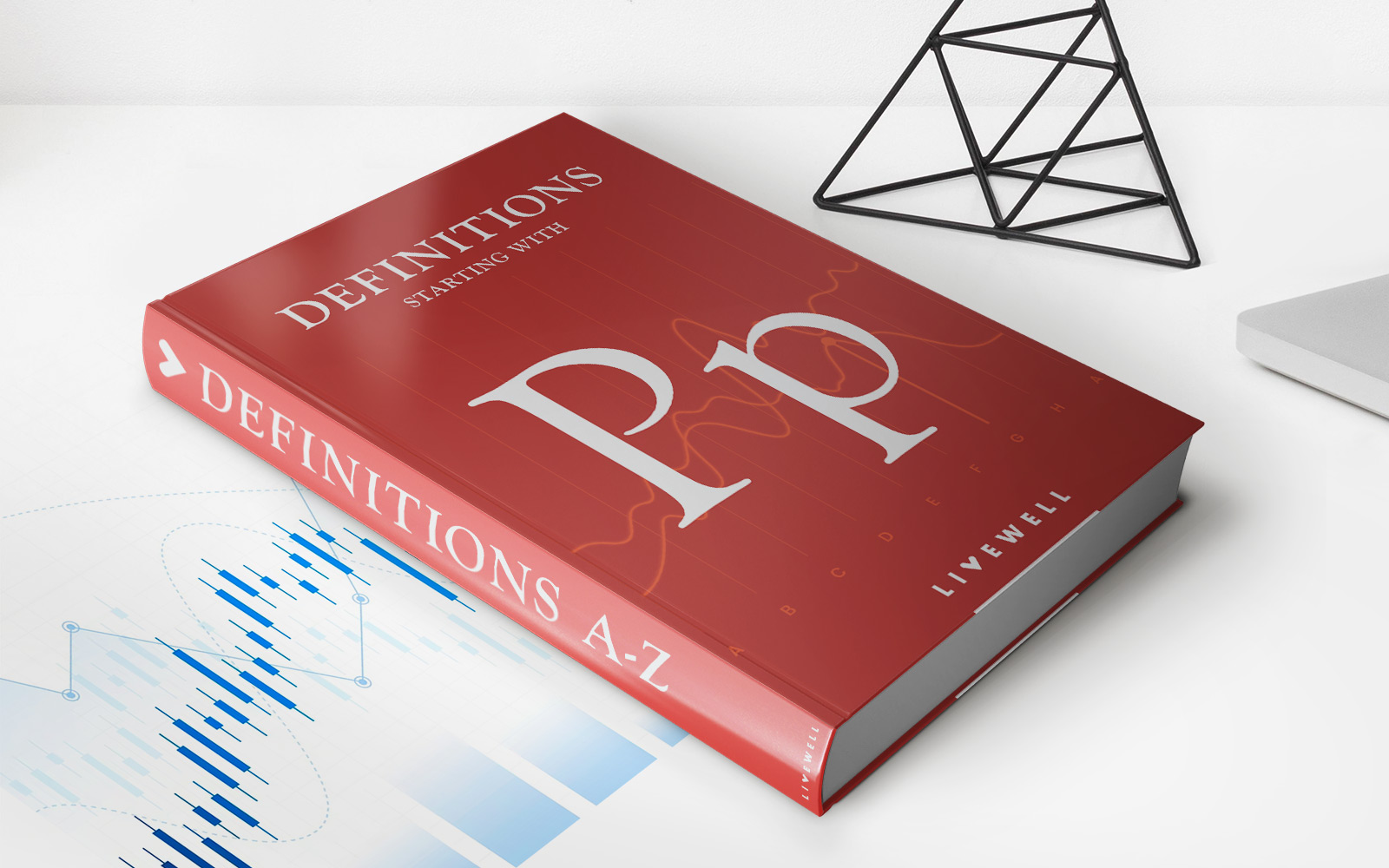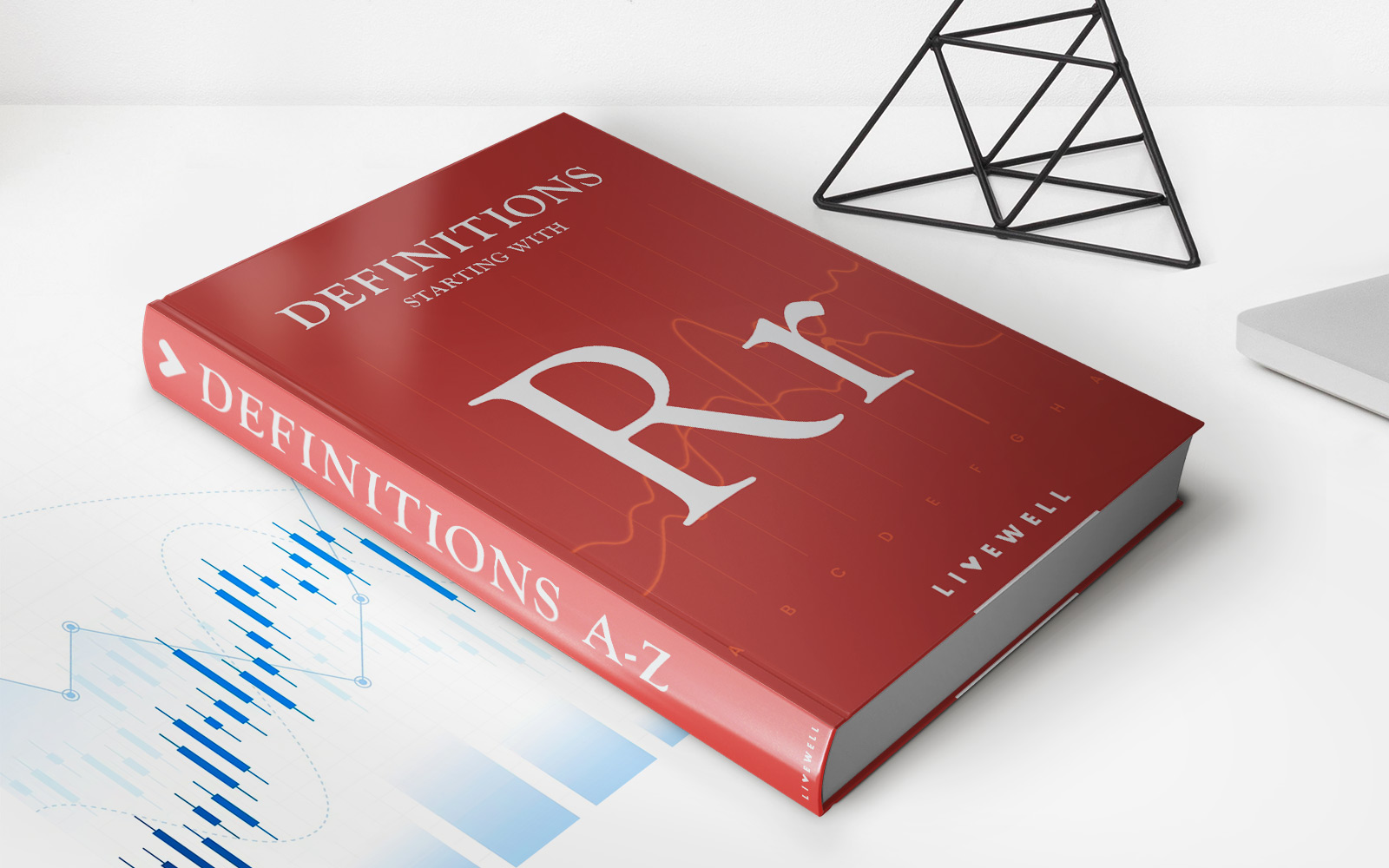Home>Finance>Why Might Investors Prefer Stock Dividends Over Cash Dividends?


Finance
Why Might Investors Prefer Stock Dividends Over Cash Dividends?
Modified: January 5, 2024
Discover why investors in the field of finance often favor stock dividends over cash dividends, and learn the benefits and rationale behind this preference.
(Many of the links in this article redirect to a specific reviewed product. Your purchase of these products through affiliate links helps to generate commission for LiveWell, at no extra cost. Learn more)
Table of Contents
Introduction
When it comes to dividends, investors have two options: stock dividends and cash dividends. While both types of dividends provide a return on investment, there are reasons why some investors may prefer stock dividends over cash dividends.
Stock dividends are essentially additional shares of a company’s stock that are distributed to shareholders instead of cash payments. On the other hand, cash dividends are monetary payments made by a company to its shareholders.
In this article, we will explore the reasons why some investors might lean towards stock dividends rather than cash dividends. From the potential benefits of ownership to the tax advantages and the flexibility in managing dividend payments, we will delve into the various factors that contribute to the preference for stock dividends.
It is important to note that the decision to prefer stock dividends over cash dividends ultimately depends on each investor’s unique financial goals, risk tolerance, and investment strategy. Let’s dive into the details and explore why stock dividends might be a more attractive option for certain investors.
Definition of Stock Dividends
Stock dividends are essentially additional shares of a company’s stock that are distributed to its shareholders instead of cash payments. When a company declares a stock dividend, it issues additional shares to existing shareholders on a pro rata basis. This means that the number of shares each shareholder owns increases, but the percentage ownership remains the same.
For example, if a company declares a 10% stock dividend and you own 100 shares, you will receive an additional 10 shares, increasing your total holdings to 110 shares. However, since all shareholders receive additional shares, the overall value of the company remains the same.
Stock dividends are usually expressed as a percentage of the existing shares outstanding. Companies typically issue stock dividends when they want to reward shareholders without utilizing their cash reserves. This can be particularly beneficial for companies that want to conserve cash for other purposes, such as investing in growth opportunities or reducing debt.
Stock dividends are typically seen as a signal of a company’s positive financial health. When a company has enough confidence in its future prospects, it may choose to distribute its earnings in the form of stock dividends, indicating that it expects continued growth and profitability.
It is important to note that stock dividends do not directly impact an investor’s wealth. While the number of shares they own increases, the overall value of their investment remains the same. However, stock dividends can have indirect benefits and may be preferred by some investors for various reasons, which we will explore further in this article.
Definition of Cash Dividends
Cash dividends are monetary payments made by a company to its shareholders. When a company declares a cash dividend, it distributes a certain amount of money per share to its shareholders, based on their ownership stake.
The amount of cash dividend a shareholder receives is determined by the dividend per share, which is usually expressed as a fixed amount or a percentage of the stock’s market price. For example, if a company declares a cash dividend of $1 per share and you own 100 shares, you will receive a total cash payment of $100.
Cash dividends are a common way for companies to distribute their earnings to shareholders and provide them with a direct return on their investment. These dividends can be a reliable source of income for investors, especially for those who rely on dividend payments to supplement their regular income.
Companies typically decide to pay cash dividends based on factors such as their financial performance, available cash reserves, and dividend policy. Some companies have a consistent track record of paying dividends, while others may choose to only pay dividends when they have sufficient earnings and cash flow.
Unlike stock dividends, which increase the number of shares a shareholder owns without directly impacting their wealth, cash dividends provide immediate liquidity. Shareholders can choose to either reinvest the cash dividends back into the company through additional share purchases or use the money for personal expenses or investment purposes.
It is important to note that the decision to pay cash dividends can also impact a company’s financial stability. While regularly paying dividends can attract income-seeking investors, it may limit a company’s ability to invest in growth opportunities or to maintain financial flexibility.
Reasons for Preferring Stock Dividends
There are several reasons why some investors might prefer stock dividends over cash dividends. While cash dividends provide immediate liquidity, stock dividends offer unique advantages that can be appealing to certain investors. Let’s explore these reasons:
- Benefit of Ownership: Stock dividends increase the number of shares an investor owns, which can enhance their ownership stake in the company. This can give shareholders a sense of increased control and participation in the company’s future growth.
- Tax Advantage: Stock dividends may have certain tax advantages for investors. In some jurisdictions, stock dividends can be treated differently than cash dividends when it comes to taxation. For example, stock dividends may be taxed at capital gains rates rather than as ordinary income. This can potentially result in a lower tax liability for investors.
- Reinvestment of Dividends: Stock dividends provide an opportunity for shareholders to reinvest their dividends back into the company. By automatically receiving additional shares instead of cash, investors can increase their holdings and potentially benefit from future growth in the company’s stock price.
- Indication of Company’s Financial Health: When a company issues stock dividends, it can be seen as a positive sign of the company’s financial health and growth prospects. Companies that regularly issue stock dividends may be viewed as financially stable and confident about their ability to generate future earnings.
- Flexibility in Managing Dividend Payments: Stock dividends offer flexibility in managing dividend payments. Companies can conserve cash by issuing stock dividends instead of distributing cash dividends, which can be beneficial in times of financial uncertainty or when the company wants to retain more cash for operational needs or investments.
Overall, the preference for stock dividends is subjective and depends on the specific circumstances and objectives of each investor. Some investors may prioritize immediate cash payments, while others may value the long-term benefits and advantages of stock dividends. It’s important to carefully consider individual financial goals, risk tolerance, and investment strategies when making a decision between stock dividends and cash dividends.
Benefit of Ownership
One significant reason why some investors prefer stock dividends over cash dividends is the benefit of ownership. When a company offers stock dividends, shareholders receive additional shares, which increases their ownership stake in the company.
By receiving more shares, investors have a greater opportunity to participate in the company’s future growth and success. This increased ownership stake can create a sense of alignment with the company’s goals and can potentially lead to higher returns if the stock price appreciates over time.
Having a larger ownership stake can also provide shareholders with more control and influence over the company’s decision-making processes. Shareholders may have the right to vote on important matters, such as electing the board of directors or approving major corporate actions. With more shares acquired through stock dividends, investors may have a more significant voice in shaping the company’s direction.
Furthermore, the benefit of ownership through stock dividends can enhance an investor’s dividend income in the future. As companies grow and generate higher earnings, they may increase their dividend payments per share. Therefore, by accumulating more shares through stock dividends, investors may enjoy larger dividend payments in the long run.
Alongside the potential for increased income, the benefit of ownership can also contribute to a sense of pride and loyalty towards the company. Shareholders who have a greater stake in a company are often more likely to support and promote its products or services, strengthening the company’s brand reputation.
However, it’s important to note that the benefit of ownership through stock dividends does not guarantee profits or protection against losses. The value of the increased ownership stake will depend on the performance of the company and the stock price movement. Investors should carefully consider their investment goals, risk tolerance, and research the company’s fundamentals before making investment decisions based on the benefit of ownership through stock dividends.
Tax Advantage
Another reason why investors might prefer stock dividends over cash dividends is the potential tax advantage associated with stock dividends.
In certain jurisdictions, stock dividends may be subject to different tax treatment compared to cash dividends. While cash dividends are typically taxed at ordinary income rates, stock dividends may be taxed at more favorable capital gains rates.
By receiving stock dividends instead of cash dividends, investors may be able to defer their tax liability until they sell the shares. If the shares are held for a longer period of time and qualify for long-term capital gains treatment, the tax rate applied to the gains may be lower than the ordinary income tax rate.
Additionally, in some jurisdictions, the tax basis of the newly acquired shares through stock dividends may be set at the fair market value at the time of the dividend distribution. This means that if shareholders decide to sell their stock in the future, they may have a higher cost basis, which could potentially lead to lower capital gains tax.
It’s important to note that the specific tax treatment of stock dividends can vary depending on the jurisdiction and individual circumstances. Tax laws are complex and subject to change, so it’s recommended that investors consult with tax professionals or financial advisors to understand the tax implications of stock dividends in their specific situation.
Despite the potential tax advantages, it is crucial for investors to evaluate the overall investment case and consider other factors beyond just tax considerations. Different investors may have different tax situations and requirements, so it is vital to assess the impact of taxes alongside investment objectives, risk tolerance, and financial goals.
Ultimately, the potential tax advantage of stock dividends can be an attractive feature for some investors, as it allows for potential tax savings and increased flexibility in managing their tax liabilities. However, it is essential to make investment decisions based on a comprehensive and holistic assessment accounting for one’s unique financial situation and objectives.
Reinvestment of Dividends
One significant advantage of stock dividends over cash dividends is the opportunity for shareholders to reinvest their dividends back into the company through additional share purchases. This process, known as dividend reinvestment, allows investors to compound their investment and potentially benefit from future growth.
When a company issues stock dividends, shareholders automatically receive additional shares based on their existing holdings. This means that instead of receiving cash, investors receive more ownership in the company. These additional shares can then be reinvested, increasing the total number of shares in the investor’s portfolio.
By reinvesting dividends, investors can take advantage of the power of compounding. Compounding occurs when the reinvested dividends generate their own returns, which can lead to a larger investment base that generates even more dividends in the future.
Over time, the effects of compounding can be significant. As dividends are reinvested and more shares are acquired, the total number of shares owned by the investor increases, resulting in a larger share of future dividends. This can accelerate the growth of an investment portfolio and potentially lead to greater returns in the long run.
Dividend reinvestment can be particularly beneficial for long-term investors who have a time horizon of multiple years or even decades. By reinvesting dividends and consistently adding to their holdings, investors can capitalize on the power of compounding and potentially achieve significant wealth accumulation over time.
Additionally, dividend reinvestment plans (DRIPs) offered by companies can make the process even more convenient for shareholders. DRIPs allow investors to automatically reinvest their dividends back into the company, often at a discounted share price or without incurring brokerage fees.
It’s worth noting that dividend reinvestment is not suitable for every investor. Some individuals may prefer the immediate cash flow provided by cash dividends, especially if they depend on dividend income for their living expenses. Others may prefer to have control over their investment decisions and choose how to deploy their cash dividends elsewhere.
Ultimately, the decision to reinvest dividends through stock dividends depends on an investor’s individual financial goals, risk tolerance, and investment strategy. By carefully considering the potential benefits of reinvestment, investors can make informed decisions that align with their long-term objectives.
Indication of Company’s Financial Health
Stock dividends can serve as a valuable indicator of a company’s financial health and stability. When a company declares stock dividends, it reflects the company’s confidence in its ability to generate future earnings and sustain its growth.
Issuing stock dividends is often seen as a positive signal to investors about the company’s financial well-being. It indicates that the company has sufficient retained earnings to distribute additional shares without affecting its cash reserves. This distribution of stock dividends suggests that the company is in a strong financial position and has the capacity to reward its shareholders.
Companies that regularly declare stock dividends may be viewed as financially stable and capable of weathering economic uncertainties. They are more likely to have sustainable cash flow and profitability, which can contribute to increased investor confidence.
Furthermore, stock dividends can provide insight into a company’s growth prospects. Companies that issue stock dividends typically do so when they anticipate future growth and want to involve their shareholders in that growth. This can be particularly appealing for investors who believe in the company’s long-term potential and want to participate in its success.
Investors often consider the regularity and consistency of stock dividend declarations as a sign of a company’s reliability. Companies that consistently maintain or increase their dividend distribution over time demonstrate a level of financial discipline and commitment to rewarding their shareholders. Such companies are generally perceived as having a responsible management team and a solid financial foundation.
However, it’s important to note that the declaration of stock dividends alone should not be the sole criteria in evaluating a company’s financial health. Investors should consider various other factors, such as the company’s financial statements, cash flow, debt levels, competitive landscape, and industry trends, to gain a comprehensive understanding of the company’s overall financial position.
Investors should also be cautious when interpreting the declaration of stock dividends from companies with inconsistent earnings or those operating in cyclical industries. In such cases, stock dividends may be used as a strategy to maintain investor confidence, even if the underlying financial health of the company is not strong.
In summary, stock dividends can be viewed as an indication of a company’s financial health and stability. Regular stock dividend declarations can signal financial strength, growth prospects, and a commitment to rewarding shareholders. However, it’s vital for investors to conduct thorough due diligence and consider multiple factors before making investment decisions.
Flexibility in Managing Dividend Payments
One compelling advantage of stock dividends over cash dividends is the flexibility they offer in managing dividend payments. Unlike cash dividends, which provide shareholders with immediate cash payments, stock dividends allow companies to distribute additional shares instead of cash.
This flexibility in managing dividend payments can be beneficial for companies, especially during times of financial uncertainty or when the company wants to retain more cash for operational needs or investments. By offering stock dividends, companies can conserve their cash reserves while still rewarding shareholders.
For investors, the flexibility of stock dividends allows them to choose how they want to allocate their dividend income. They have the option to hold onto the additional shares received through stock dividends, which could potentially result in greater returns if the stock price appreciates over time.
Alternatively, shareholders can decide to sell a portion of their stock dividend shares to generate cash if they need immediate liquidity or wish to diversify their investment portfolio. This flexibility in managing dividend payments provides investors with the freedom to make decisions aligning with their individual financial goals and circumstances.
Additionally, through stock dividends, shareholders can strategically reinvest their dividend income in specific companies or sectors of their choice. Instead of receiving cash that may need to be invested elsewhere, investors have the opportunity to automatically reinvest in the company that issued the stock dividends, potentially maximizing their investment returns.
Moreover, the flexibility of stock dividends also allows investors to customize their income streams. By receiving stock dividends instead of cash dividends, shareholders can control the timing and extent of when they convert those shares into cash. This flexibility can be particularly advantageous in managing tax liabilities and optimizing portfolio allocation.
However, it’s important to note that the flexibility in managing dividend payments through stock dividends may not suit all investors. Some individuals may prefer the stability and immediate cash flow provided by cash dividends, especially if they rely on dividend income for living expenses or have specific financial obligations.
Ultimately, the flexibility of stock dividends in managing dividend payments allows investors to make choices based on their unique financial objectives and market conditions. It provides the opportunity to strategically allocate dividend income, utilize the potential for capital appreciation, and maintain control over cash flow needs.
As with any investment decision, investors should carefully consider their own financial circumstances, risk tolerance, and investment goals before choosing between stock dividends and cash dividends.
Potential Disadvantages of Stock Dividends
While there are several advantages to stock dividends, it’s important to consider the potential disadvantages as well. Stock dividends may not be the ideal choice for every investor, and certain factors should be evaluated before deciding to prefer them over cash dividends. Let’s explore some of the potential drawbacks:
- Dilution of Ownership: When a company issues stock dividends, it increases the total number of shares outstanding. While existing shareholders receive additional shares, their ownership percentage in the company may decrease. This dilution of ownership can result in reduced control and influence over the company’s decision-making processes.
- Market Influence: The release of stock dividends can have an impact on the stock price. An increase in the number of shares in circulation may potentially lead to downward pressure on the stock price, especially if the market perceives the stock dividends as a negative signal. This can affect the overall value of an investor’s portfolio.
- Tax Implications: Although stock dividends may offer potential tax advantages, they can still have tax implications depending on the jurisdiction and individual circumstances. When stock dividends are received, they may be subject to taxation based on their fair market value at the time of distribution. Investors should consult tax professionals to understand the specific tax implications associated with receiving stock dividends.
- Limited Cash Flow: Stock dividends do not provide immediate cash flow to investors compared to cash dividends. This lack of immediate liquidity may not be suitable for shareholders who rely on regular income from their investments to cover living expenses or other financial obligations.
- Trading Restrictions: Some companies may have trading restrictions or limitations on selling or transferring the stock dividend shares received. These restrictions can reduce an investor’s ability to freely manage their investment portfolio or take advantage of potential opportunities in the market.
It’s important for investors to carefully evaluate the potential disadvantages of stock dividends and consider their individual investment goals and risk tolerance. Some investors may prioritize the ownership benefits and long-term growth potential of stock dividends, while others may prefer the immediate cash flow and stability offered by cash dividends.
Ultimately, the decision to prefer stock dividends over cash dividends should be based on a thorough assessment of personal financial circumstances, investment objectives, and the specific characteristics of the company issuing the dividends.
Conclusion
Choosing between stock dividends and cash dividends is a decision that investors must make based on their individual financial goals and preferences. While both types of dividends offer benefits, there are reasons why some investors may prefer stock dividends over cash dividends.
Stock dividends provide the benefit of ownership, allowing investors to increase their stake in a company and potentially benefit from future growth. They also offer potential tax advantages, allowing investors to defer taxes or potentially pay lower tax rates on capital gains.
The opportunity for dividend reinvestment through stock dividends can be attractive to investors who want to compound their investment and participate in the long-term growth of the company. Additionally, the declaration of stock dividends can signal a company’s financial health and stability, adding a layer of confidence for investors.
However, it’s important to consider the potential disadvantages of stock dividends, such as dilution of ownership, possible market impact, tax implications, and limited cash flow. Investors should carefully evaluate these factors, along with their own financial circumstances and investment objectives, before making a decision.
In the end, the choice between stock dividends and cash dividends depends on each investor’s unique circumstances and priorities. Some investors may prioritize immediate cash flow and stability, while others may value the long-term potential and advantages of stock dividends.
Ultimately, it is crucial for investors to conduct thorough research, consult with professionals if needed, and align their investment strategy with their financial goals and risk tolerance. By carefully considering the advantages and disadvantages of stock dividends, investors can make informed decisions that best suit their needs and lead to successful investment outcomes.














